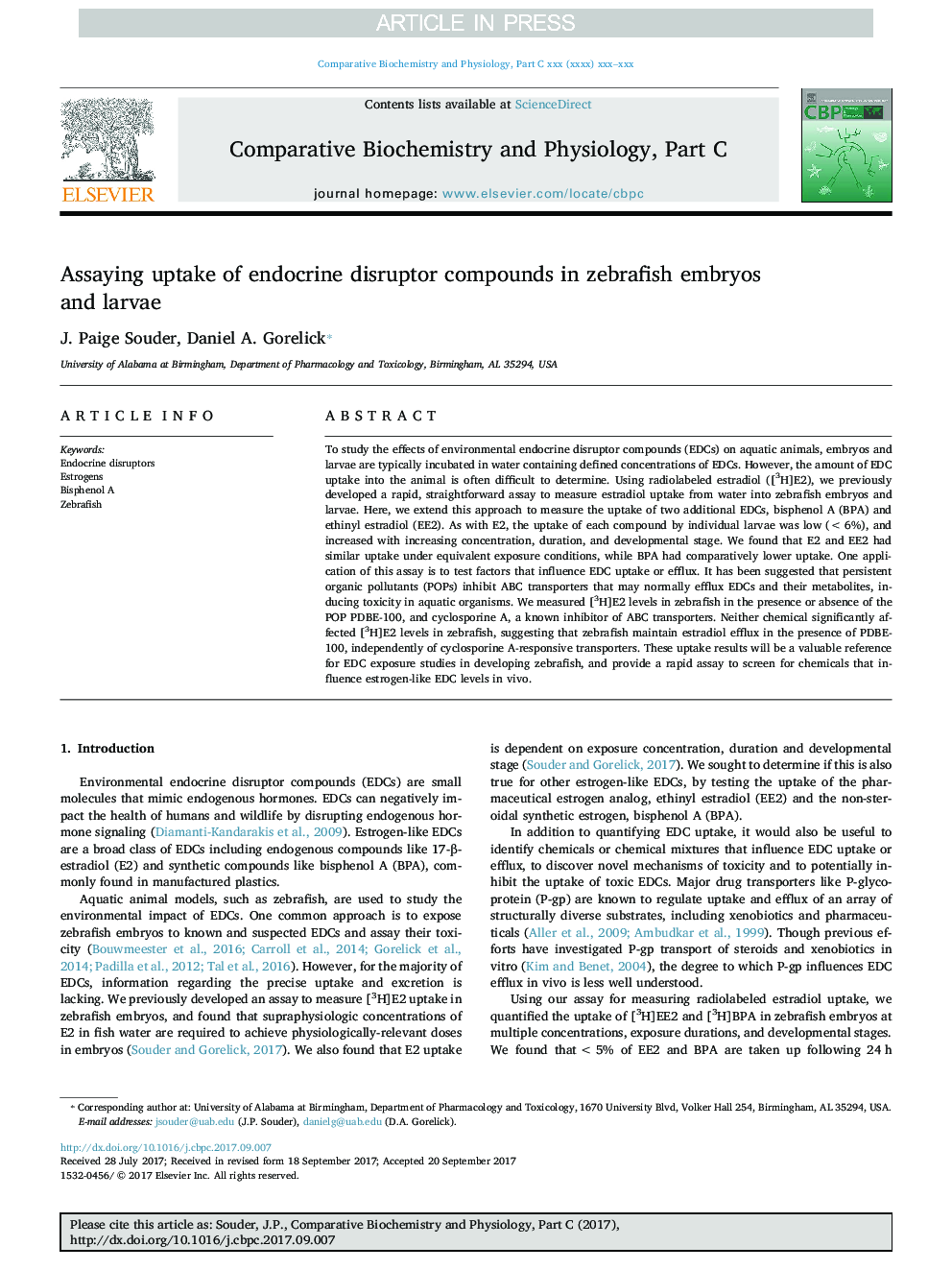| Article ID | Journal | Published Year | Pages | File Type |
|---|---|---|---|---|
| 8319003 | Comparative Biochemistry and Physiology Part C: Toxicology & Pharmacology | 2018 | 9 Pages |
Abstract
To study the effects of environmental endocrine disruptor compounds (EDCs) on aquatic animals, embryos and larvae are typically incubated in water containing defined concentrations of EDCs. However, the amount of EDC uptake into the animal is often difficult to determine. Using radiolabeled estradiol ([3H]E2), we previously developed a rapid, straightforward assay to measure estradiol uptake from water into zebrafish embryos and larvae. Here, we extend this approach to measure the uptake of two additional EDCs, bisphenol A (BPA) and ethinyl estradiol (EE2). As with E2, the uptake of each compound by individual larvae was low (<Â 6%), and increased with increasing concentration, duration, and developmental stage. We found that E2 and EE2 had similar uptake under equivalent exposure conditions, while BPA had comparatively lower uptake. One application of this assay is to test factors that influence EDC uptake or efflux. It has been suggested that persistent organic pollutants (POPs) inhibit ABC transporters that may normally efflux EDCs and their metabolites, inducing toxicity in aquatic organisms. We measured [3H]E2 levels in zebrafish in the presence or absence of the POP PDBE-100, and cyclosporine A, a known inhibitor of ABC transporters. Neither chemical significantly affected [3H]E2 levels in zebrafish, suggesting that zebrafish maintain estradiol efflux in the presence of PDBE-100, independently of cyclosporine A-responsive transporters. These uptake results will be a valuable reference for EDC exposure studies in developing zebrafish, and provide a rapid assay to screen for chemicals that influence estrogen-like EDC levels in vivo.
Related Topics
Life Sciences
Biochemistry, Genetics and Molecular Biology
Biochemistry
Authors
J. Paige Souder, Daniel A. Gorelick,
